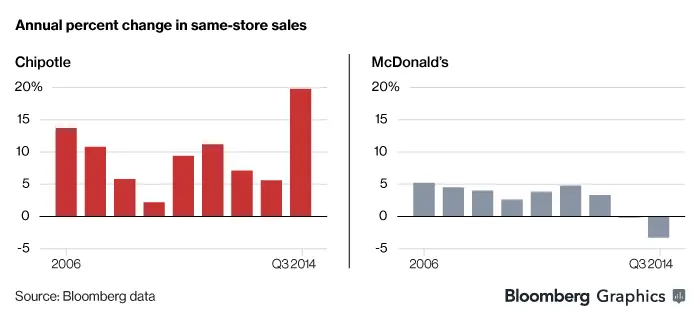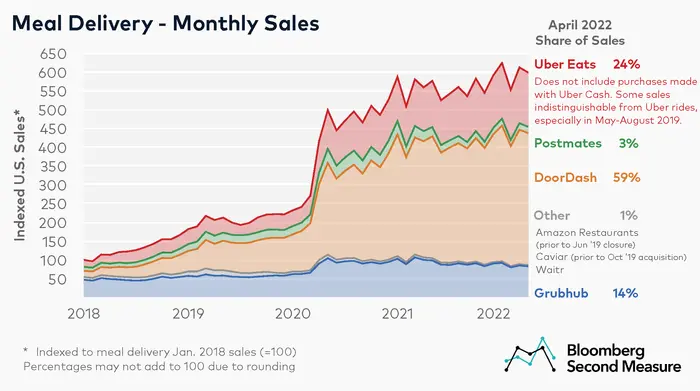In previous posts of the Personal Finance Basics series we covered:
- How the stock market works
- What the S&P 500 and the Dow are
- The pitfalls of investing in the stock market
- The stock market is a wealth-generating machine
As a summary, we learned that:
- The value of the U.S. stock market has increased over the past 100+ years
- This increase hasn’t been constant. There have been numerous economic downturns and stock market crashes.
- And yet, $1,000 invested in the S&P 500 in 1980 would grow to $34,700 by 2022.
- All of the companies in the stock market today will one day disappear
- Companies in the S&P 500 had a lifespan of 30 to 35 years in the 1970’s. This tenure has since decreased to 15 to 20 years. The rate of change is accelerating.
- None of the world’s largest companies in 1989 retained their spot in 2021.
- New technology, relentless competition, and poor leadership means companies will continue to go out of business.
- This makes it incredibly difficult to predict which companies will be studs and which will be duds.
- Five of the reasons for the stock market’s increase are:
- Inflation: the price of goods has gone up over time.
- Population growth: more people means more workers and more consumers.
- Technology: new technology creates new industries (e.g., cars require gas, tires, mechanics, etc.) and makes people more productive (e.g., it’s faster to sew a shirt with a machine than by hand.)
- Natural selection (survival of the fittest): only the profitable companies survive over the long run.
- Animal spirits: humans are irrational and so the stock market is as well. When the economy is sucky, a dark cloud dampens our spirits. But when we—as a collective—feel hopeless (e.g., due to war, global warming, etc.), the economy also suffers. It’s a bidirectional relationship.
- Economic growth is not a law of nature.
- Given water, sunshine, and suitable soil, a tree will grow. This is a law of nature.
- The same cannot be said of the stock market—our economy is a human creation. Growth is not guaranteed.
- Case in point, the Nikkei 225, the Japanese version of the S&P 500, peaked in 1989 and has not again reached its former height.
At this point, two facts about the stock market should be clear:
- It’s full of danger 🚨
- It has wealth-generating potential 💰
In this post we’ll talk about how we can tap into the stock market’s wealth-generating potential while mitigating its dangers.
How much is a company worth?
If we’re comparing two companies, how do we know which is more valuable?
Do we take a look at sales or profit?
Sidenote
If a company sells 100 trinkets for $1 each, its total sales (revenue) is $100. If each trinket costs $0.50 to make, the company’s profit (net income) is $50. ($100 in revenue minus $50 in costs.)
A company can have high sales and low (or even negative) profit. If a company makes a popular gadget for $20 and sells it for $10, it will have high sales but negative profit.
Businesses sometimes purposely lose money on a product to stimulate sales or to grow their market share. These products are called loss leaders.
Do we consider the debts and assets of the companies?
Sidenote
Is a company that owns billions of dollars worth of real estate more valuable than one that owns no real estate but has higher profits?
McDonald’s, for example, has 38,695 restaurants in over 119 countries. They own the land on which their restaurants are located—over $30 billion in real estate. Their revenue, however, isn’t growing very fast.
Chipotle, meanwhile, has 2,966 restaurants in 5 countries. They lease their buildings so they don’t have real estate assets. Their revenue, however, is booming.

Chart courtesy of Bloomberg.
Similarly, is a company that’s losing millions of dollars but growing at hyper-speed more valuable than one that’s highly profitable but growing slowly?
An example here would be DoorDash—high-growth but losing money—versus Procter & Gamble—a mature company with slow, steady growth.

Chart courtesy of Bloomberg Second Measure.
As you can see, there are lots of different ways we can compare two companies. And the results will vary depending on the criteria used.
Market capitalization
For public companies that sell shares in a stock exchange, market capitalization (commonly called market cap) is the measure typically used to rank companies.
Market cap represents the market value for a company. In other words, it’s the amount of money it would take to purchase the entire company.
Sidenote
The market value is simply the price that someone is willing to pay for an asset.
A house, for example, has a market value that depends on a lot of different factors, such as its location, its age, its wear and tear, its size, etc.
For example, The Manor at Holmby Hills in LA was sold in 2019 for $120 million. This was its market value at the time
Every asset—your computer, your car, your phone, etc.—has a market value. Put an asset on sale and the price it fetches is its market value.
To calculate a company’s market cap, we multiply the company’s share price by the number of shares of the company that are held by investors.
Sidenote
The number of shares of a company held by investors is called shares outstanding. Given this, the formula for calculating a company’s market cap is:
Market capitalization = Share Price × Number of Shares Outstanding
Let’s say we want to calculate Tesla’s market cap. To do this, we need to get Tesla’s share price and number of shares outstanding.1
We go to the Barron’s page for Tesla and see that its share price is $2882 and the number of shares outstanding is 3.13 billion. Multiplying these numbers, we arrive at a market cap of $901 billion.3
Sidenote
And if you’re curious, Apple is the world’s most valuable company with a market cap right under $3 trillion. Microsoft, Google, Amazon, and Tesla round out the top 5.
Buying the whole market
A couple of posts ago, I proposed a solution for sidestepping the difficulty of deciding:
- Which company’s stock to buy
- When to buy and sell
This solution was to buy stock in every single company and to hold these over the long term.
But how the heck are we supposed to buy stock in every single company? There are thousands of them.
And in what proportion am I supposed to buy them? One of each?
The answer to the first question is an index fund; the answer to the second is market cap.
Sidenote
It seems silly—we’re not deciding at all
Which company do I buy? All. When do I buy? Yes. When do I sell? Long term.
We have to realize that when we buy a company’s stock we’re making a very specific bet—we’re putting money on the belief that this specific company will increase in value. The odds for any one company in the long run, however, are dismal.
When we buy stock in every company, we’re diversifying our bet. We’re saying, “I don’t know which company will be a winner, but I’m willing to bet that the stock market as whole will increase.”This is an optimistic bet on the future of the United States.
The chief business of the American people is business. They are profoundly concerned with producing, buying, selling, investing and prospering in the world. I am strongly of the opinion that the great majority of people will always find these are the moving impulses of our life.
The same goes for the decision of when to buy and sell. The stock market can be irrational. There will be booms and crashes. Timing your transactions to buy at the lowest point and sell at the highest is impossible. And will quickly drive you insane.
By buying consistently and holding the stock over a long period of time, we double down on our optimistic bet of long-term growth and avoid the day-to-day turmoil.
The temptation when you see bad headlines in newspapers is to say, well, maybe I should skip a year or something. Just keep buying. American business is going to do fine over time, so you know the investment universe is going to do very well.
Index funds
Say Rafael and Sofia want to start investing. Rafael is a caffeine-fiend so he buys a share of Starbucks. Sofia is a gamer so she buys a share of Nintendo.
Rafael and Sofia are now tied to the fate of a single company.
What if Elon Musk started a new coffee company called UniverseBuckaroos and drove Starbucks out of business?
Sidenote
Here’s how UniverseBuckaroos would work:
- Every store is solar powered and all store supplies (coffee, cups, etc.) are transported via tunnels built by The Boring Company.
- Each drink comes with a sprinkling of stardust. (Thousands of pounds of stardust are mined daily with SpaceX rockets.)
- If you’ve got a Neuralink chip installed on your brain, the barista knows you better than you know yourself and will serve you the most amazing drink you didn’t even know you wanted.
- Each week a random customer gets a free Tesla.
If this isn’t a guaranteed winner, I don’t know what is. Hit me up Elon.
What if Mario, Luigi, Peach, and Bowser went on a labor strike and refused to participate in any new video games? Nintendo stock would surely crash.

Comic created by Safely Endangered.
Hedging the bet
Rafael and Sofia think this over and realize that tying their finances to one company is too risky.
To diversify their investments, they decide to share ownership of their Starbucks and Nintendo stock. That way, if either Starbucks or Nintendo tanked, they’d still be OK.
Rafael and Sofia high-five and do a little happy dance. Then a simultaneous thought occurs: why stop here?
What if they roped in 998 of their closest friends and created a giant shared stock pool?
Each person would buy a share in a different company and add it to the pool. They’d then each own a thousandth of a share in 1,000 different companies.
By doing this, Rafael and Sofia would no longer be solely betting on Starbucks and Nintendo, but on the growth of industry and technology in the United States as a whole.
If a few of the thousand companies crashed and burned, they’d still be alright as the gains in the other companies would pick up the slack.
Hold on a second
Rafael and Sofia start going through their rolodex, calling their friends with their terrific idea, when Sofia is stopped in her tracks by a thundering realization: buying one share in each company makes no sense.
How does it make sense to buy the same number of shares in Apple and Starbucks when Apple’s market cap is 264 times larger? Shouldn’t there be 26 shares of Apple for every 1 share of Starbucks?
And, hey, hold on a second—how is it fair that Pedro buys a Macy’s share that costs $17.81 and Carla buys a UPS share that costs $167 and yet they both get equal ownership of all shares?
This approach, Sofia reasons, is all wrong. They shouldn’t buy a share in each company.
Instead, they should pool their money and distribute it among the companies based on each company’s market cap.
Ranking the S&P 500 by market cap
A quick search reveals that the total market cap of the S&P 500 is $35.1 trillion. This means that if we add up the market cap of each company in the S&P 500 we’ll get $35.1 trillion.
This will be our denominator—we’ll divide the market cap of each company in the S&P 500 by $35.1 trillion to figure out what percentage of the S&P 500’s total market cap the company accounts for.
Sofia finds a list of the companies in the S&P 500 ranked by market cap and sees that Apple is the king with a market cap of $2.5 trillion.
2.5 trillion divided by 35.1 trillion is 7.12%. This means that 7.12% of the money should be used to buy Apple stock.5
Sofia creates a spreadsheet to calculate this percentage for the other 499 companies in the S&P 500.
Here’s what the first eleven rows of the spreadsheet look like:
| Company | Market Cap | Percent of S&P 500's Market Cap |
|---|---|---|
| Apple | $2.5 trillion | 7.12% |
| Microsoft | $1.95 trillion | 5.55% |
| $1.32 trillion | 3.76% | |
| Amazon | $1.29 trillion | 3.68% |
| Tesla | $863 billion | 2.46% |
| Berkshire Hathaway | $618 billion | 1.76% |
| UnitedHealth Group Inc | $485 billion | 1.38% |
| Johnson & Johnson | $424 billion | 1.21% |
| Exxon | $398 billion | 1.13% |
| Nvidia Corp | $377 billion | 1.07% |
| $373 billion | 1.06% |
Now all Sofia and Rafael have to do is collect the money from their friends and distribute the funds according to the spreadsheet.
If they managed to pool $1,000:
- $71.206 would go towards buying Apple stock
- $55.50 towards Microsoft stock
- $37.60 towards Google stock
- $36.80 towards Amazon stock
and so on.
This already exists?
Rafael and Sofia pick up the phone again and begin calling their friends to explain the new plan.
Luckily for them, the first person they call is Andrea who tells them that their revolutionary idea already exists—it’s called an index fund. Vanguard, Fidelity, and lots of other online stockbrokers offer them.
Andrea explains that companies like Vanguard and Fidelity pool money from investors and use this money to buy shares of companies. This is called a mutual fund.
An index fund is a type of mutual fund that tracks an index to decide how to invest the pool of money.
An S&P 500 index fund, for example, would distribute the investors’ money in the same way that Sofia had planned—that is, by allocating a portion of the total funds to each company based on the company’s weight in the index.
These index funds spare us the arduous task of buying every company in the stock market and so the companies that manage these funds charge a fee for the service.
As long as this fee is low—under 0.05%7 ideally—then this is a worthy tradeoff to avoid this complexity.
Sofia and Rafael breathe a sigh of relief, throw their rolodex out the window, and go for a long walk in the park.
Summary
Consistently buy an S&P 500 low-cost index fund. Keep buying it through thick and thin, and especially through thin.
In this post we learned that:
- There are many different ways to compare companies.
- We can compare companies based on their revenue or their net income or on the value of their assets or on how fast they’re growing.
- Two people can look at the same company and come up with completely different valuations depending on the numbers they choose to focus on.
- Market capitalization (market cap) is the measure by which public companies are ranked.
- A company’s market cap is the price we’d have to pay to purchase the company outright.
- To calculate market cap we multiply the number of existing shares (shares outstanding) by the share price.
- By buying shares of every company in the stock market, we diversify our bet and avoid tying our finances to the fate of a single company.
- This is a bet on the future of the industrial and technological capacity of the United States—and the world—as a whole rather than a bet on the future of a single company.
- Ask yourself, am I more likely to bag a winner if I buy stock in 500 companies or 1 company?
- Investors can pool their money together and use this money to buy shares of companies in the stock market. This is called a mutual fund.
- An index fund is a type of mutual fund that uses an index, such as the S&P 500, to decide how to apportion the investors’ money.
- An S&P 500 index fund divides the pool of money among the 500 companies based on the ratio of each company’s market cap to the market cap of the S&P 500 as a whole.
- Apple accounts for 7.12% of the total market cap of the S&P 500 so 7.12% of the pooled money would go towards buying Apple stock.
- Companies that manage index funds charge a fee for the service. A fee under 0.05% is very good and is a worthy tradeoff for taking this complexity off our hands.
In the upcoming posts we’ll take a closer look at index funds and then take a second to review everything we’ve learned so far about the stock market and investing.
I hope this was helpful. Feel free to send me an email if you have any questions.
And if you’re looking to learn more, you can check out the whole Personal Finance Basics Series.
Video for this post
If you prefer watching to reading, here’s an easy-to-follow video I made with all this info:
Slides for this post
If you’re interested, check out the slides I made for the video.
Stay in touch!
Enjoying so far? Get my posts delivered straight to your inbox each week. 📨
*If this form gives you any trouble, reach out to me at hi@pathtosimple.com and I’ll help you out.
Footnotes
-
Websites like Yahoo Finance or Barron’s provide this data for free. ↩
-
The numbers used here ($288 and 3.13 billion) were pulled on September 8, 2022. Since they change every minute, it’s unlikely they’ll be the same when you read this. ↩
-
The data on Barron’s also conveniently includes market cap (labeled as Market Value), which we can use to double-check our math. And it checks out. 🤓 ↩
-
As of September 8, 2022, Apple’s market cap is $2.5 trillion and Starbucks’ market cap is $96 billion. $2.5 trillion ÷ $96 billion is 26. ↩
-
2,500,000,000,000 ÷ 35,100,000,000,000 = 2.5 ÷ 35.1 = 0.0712 and 0.0712 × 100 = 7.12%. ↩
-
7.12% × $1,000 = .0712 × $1,000 = $71.20 ↩
-
A fee of 0.05% means you’d pay $0.50 in fees for every $1,000 you invest as (0.05 ÷ 100) × $1,000 = $0.50. ↩
